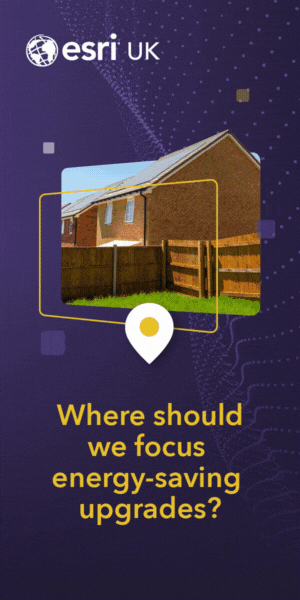Ofcom
|
|
Scotland leads the UK for time spent watching TV
People in Scotland watch more television than viewers in the rest of the UK, research from Ofcom finds.
- Scots spend more time watching broadcast television than any other UK Nation
- But viewing time is on the decline – down 16% since 2010
- Viewing is moving online, with BBC iPlayer the most popular streaming service
- Strictly Come Dancing semi-final most-watched programme of 2017
In 2017, viewers in Scotland spent a daily average of 3 hours 46 minutes watching broadcast television on the TV set, 24 minutes more than the UK average of 3 hours 23 minutes.[1]
Despite Scots spending the most time watching TV, viewing time is on the decline. In 2017, Scottish viewers spent 9 minutes less (-3.8%) watching broadcast television on the TV set than in 2016, and 46 minutes less (-16%) compared with 2010.
The decline in broadcast TV viewing is even steeper among younger viewers. In 2017, youngsters aged 4 to 15 watched 1 hour and 27 minutes of broadcast TV each day, down from 2 hours 28 minutes in 2010 (-41%).
Similarly, 16 to 34-year-olds watched 2 hours 16 minutes of broadcast TV per day in 2017, compared with 3 hours 25 minutes in 2010 (-34%).
This means that the over-55s in Scotland watched almost four times as much broadcast television per day than children in 2017.
The findings are part of Ofcom’s Media Nations: Scotland 2018 report (PDF, 7.3 MB), a comprehensive study of trends in the television, radio and audio sectors, published today.
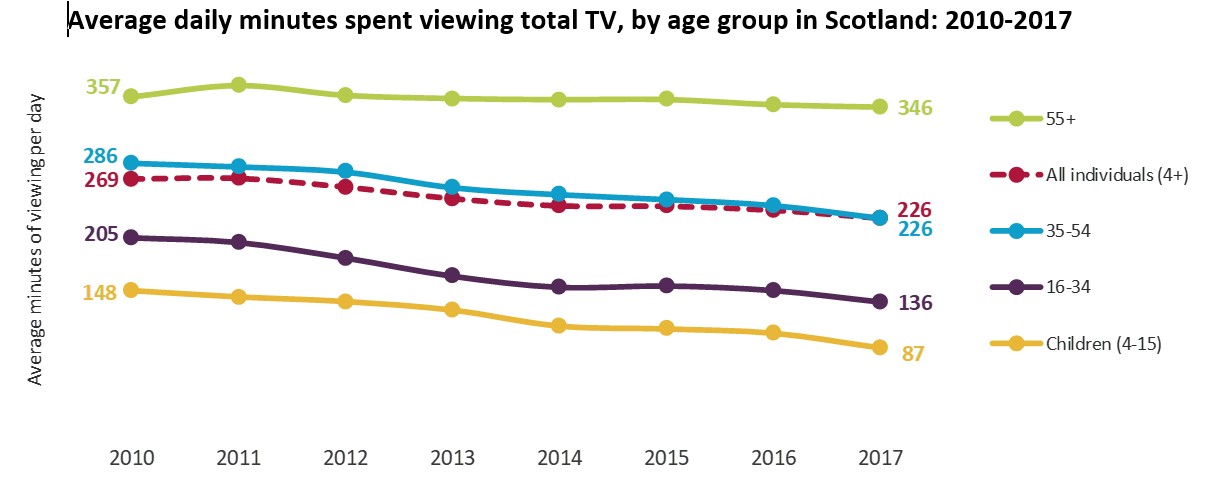
Viewing in Scotland moving online
Although people in Scotland are watching less broadcast television, they are spending more time watching other things on their TV set.
Daily viewing of non-broadcast content, such as YouTube and subscription on-demand services including Netflix and Amazon Prime Video, increased by three minutes (8%) in 2017, to 40 minutes.
 BBC iPlayer was the most popular online streaming service in Scotland, with 47% claiming to have ever used it, followed by Netflix (39%) and the STV Player (31%).
BBC iPlayer was the most popular online streaming service in Scotland, with 47% claiming to have ever used it, followed by Netflix (39%) and the STV Player (31%).
The use of Netflix, in particular, is heavily skewed towards younger viewers in Scotland. Thirty-one per cent of adults in Scotland claim to use the service at least once a week. This rises to 60% among 16-24s and 53% among 25-34s, but drops to just 8% of the 65+ age group.
Glenn Preston, Ofcom’s Scotland Director, said: “Today’s research shows that the way people in Scotland watch TV is changing rapidly.
“Although viewers in Scotland watch more TV than in the rest of the UK, they are spending less time watching ‘traditional’ broadcast TV and are turning to online streaming services, attracted by their exclusive programmes and vast libraries of classic shows.
“Broadcasters in Scotland must confront the challenges posed by both online streaming companies and the changing way people are watching television, to ensure they continue to make great shows to appeal to Scottish viewers in the digital age.”
Other key findings from the report include:
- In 2017 the BBC, STV and ITV spent a combined £53.9m on first-run, UK made programmes for viewers in Scotland, an 8% real-terms decrease year-on-year. Although accounting for the largest proportion of spend on first-run, UK originations for Scotland, the BBC reduced its annual programming spend by 10%, while STV and ITV’s spend remained broadly stable;
- Viewers in Scotland continue to value public service broadcasting content, with 71% of viewers either satisfied or very satisfied. This compares with a UK average of 75%, 75% in England, 72% in Wales and 69% in Northern Ireland.
- The semi-final of Strictly Come Dancing was the most-viewed broadcast programme on the TV set across Scotland in 2017, with an audience of nearly 1.2 million; and
- Digital radio listening in Scotland (either online, through digital television or through a DAB set) increased, reaching 47% of all listening hours by the start of 2018, up from 30% in 2013. Ownership of DAB radios is higher in Scotland than in the rest of the UK (66% at the start of 2018 compared with the UK average of 64%).
Notes to Editors
1. Average total TV daily viewing, by nation, (in minutes): 2010-2017
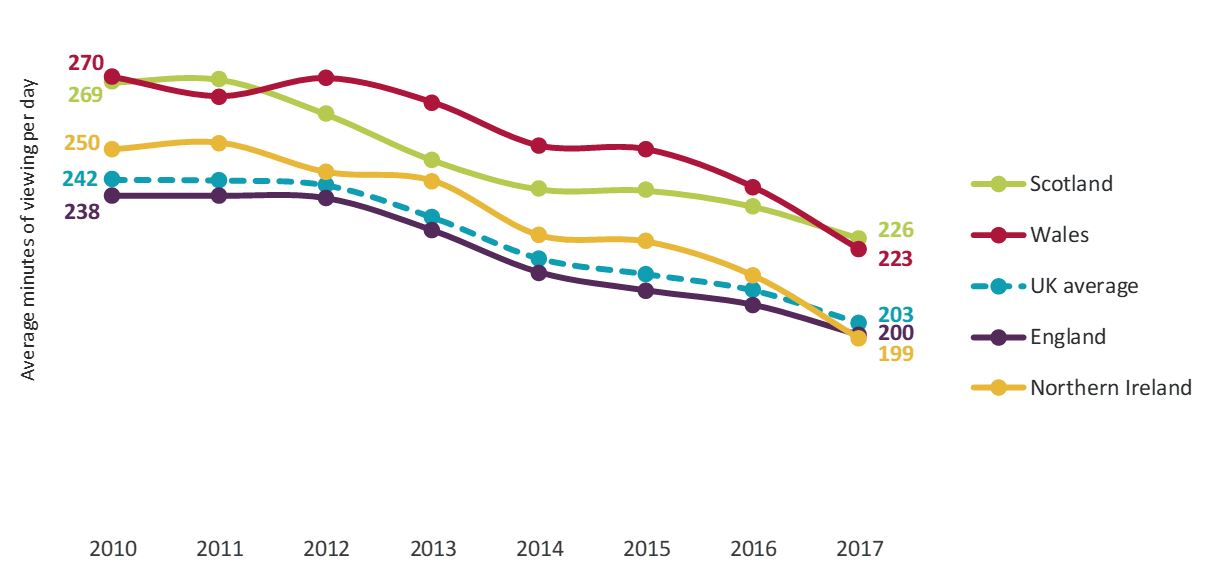
2. Top 20 most-watched programmes in Scotland, 2017
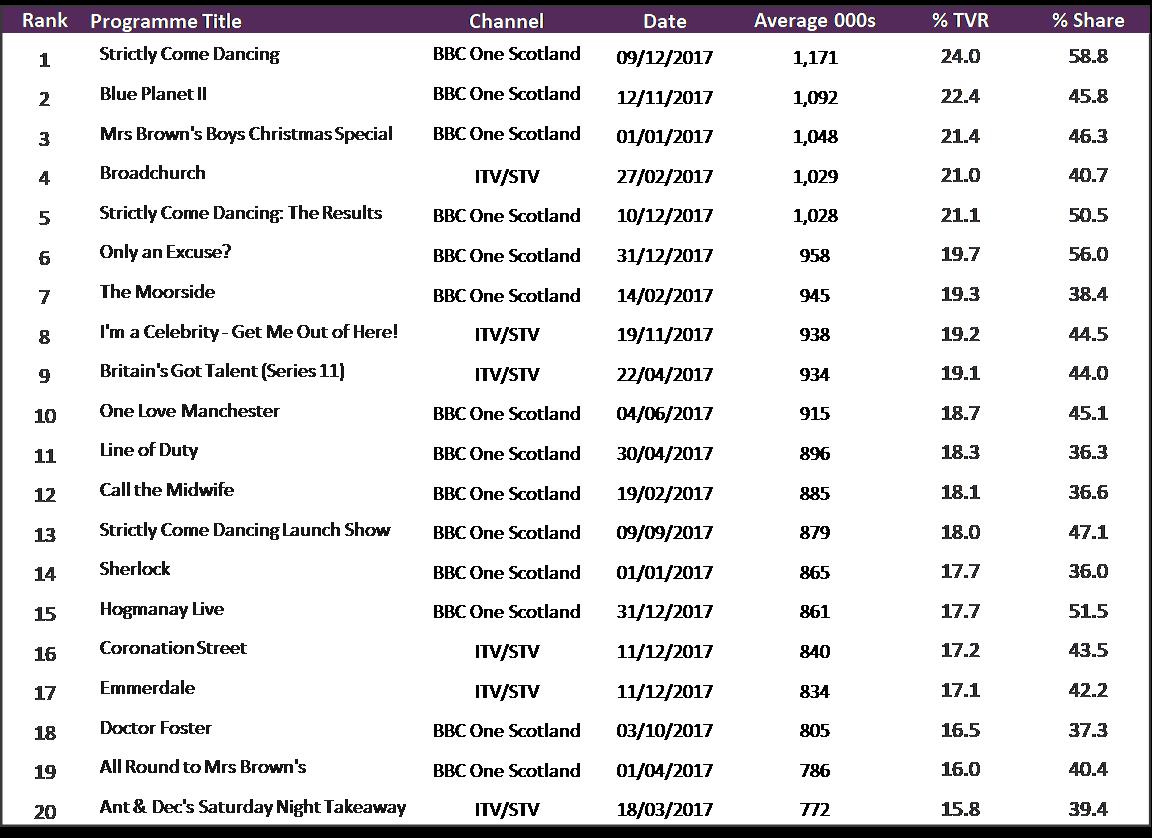
Source: BARB. BBC areas, all individuals (4+). The TVR (television rating) measures the popularity of the programme by comparing its audience to the population as a whole. One TVR is numerically equivalent to 1% of the target audience.
3. Key Findings in Scotland
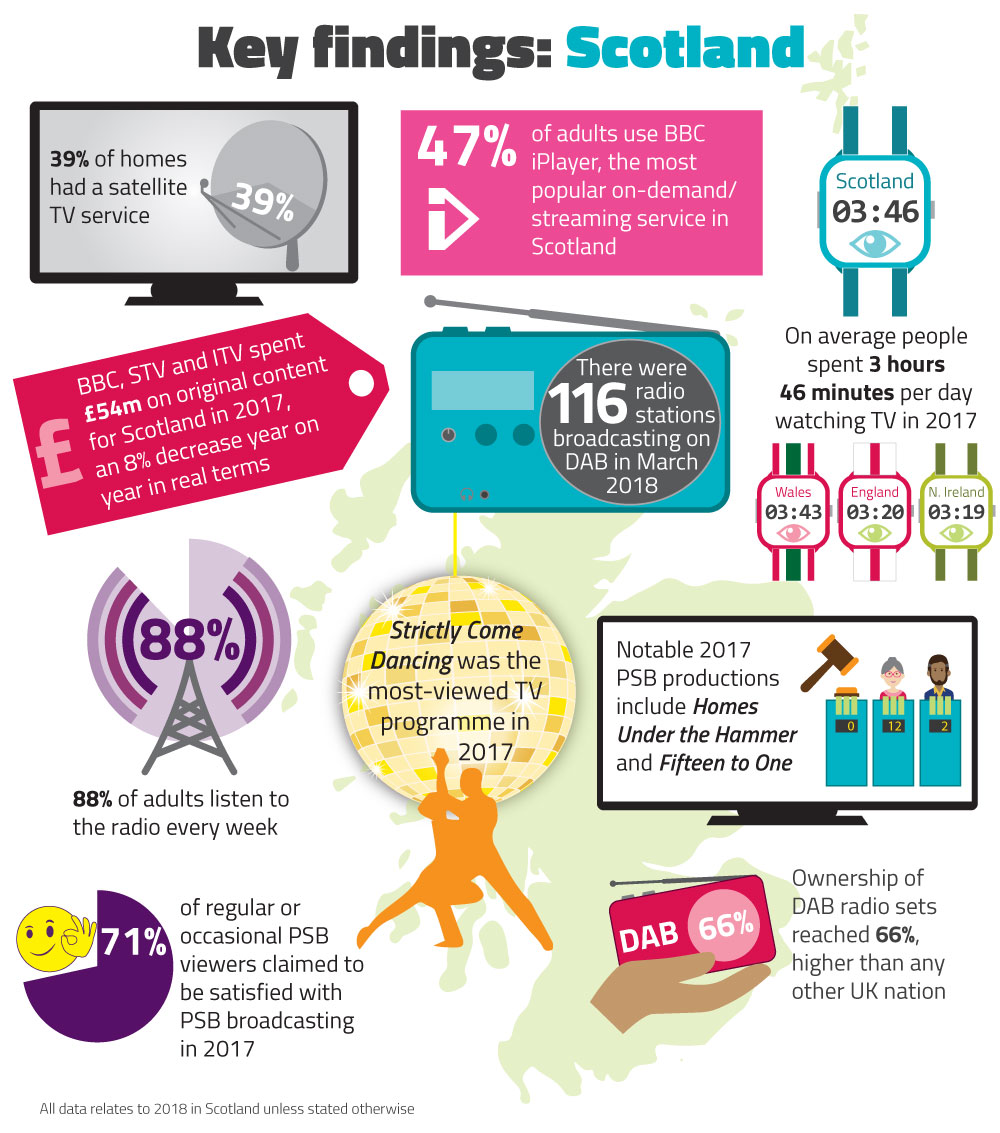
Original article link: https://www.ofcom.org.uk/about-ofcom/latest/media/media-releases/2018/scotland-time-watching-tv


